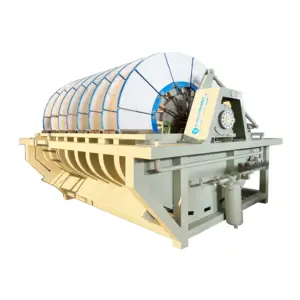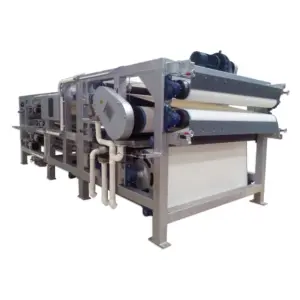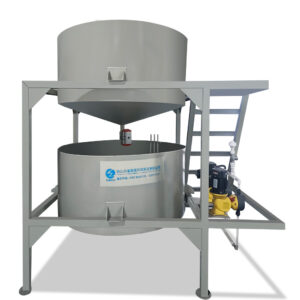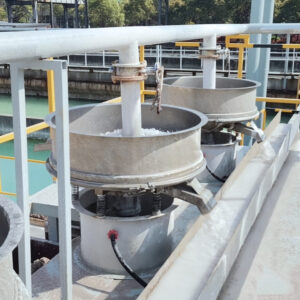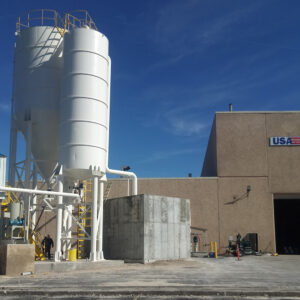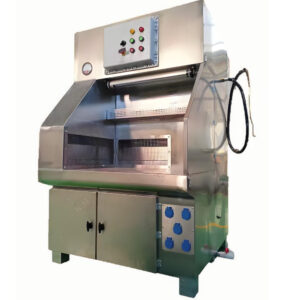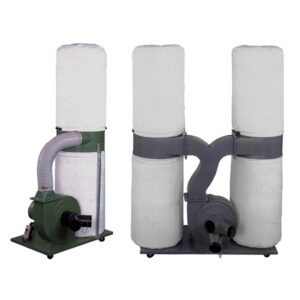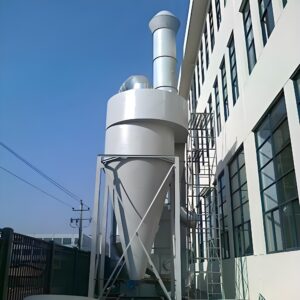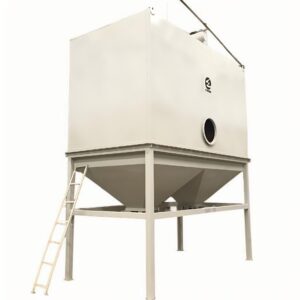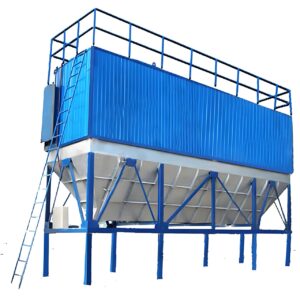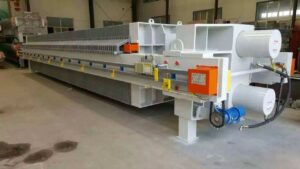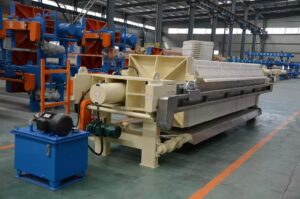Ventilation requirements for downdraft tables are crucial for maintaining a safe and efficient work environment in various industries. These specialized workstations play a vital role in capturing and removing harmful particulates, fumes, and vapors generated during manufacturing processes. By understanding and implementing proper ventilation standards, businesses can protect their workers' health, comply with regulations, and optimize their operations.
The key to effective downdraft table performance lies in the careful consideration of airflow, filtration, and system design. Proper ventilation ensures that contaminants are swiftly drawn away from the breathing zone of operators, preventing exposure to potentially hazardous substances. This article will explore the essential aspects of downdraft table ventilation requirements, providing insights into best practices, industry standards, and innovative solutions for optimal performance.
As we delve into the intricacies of downdraft table ventilation, we'll examine the factors that influence system efficiency, discuss the importance of regular maintenance, and highlight the latest advancements in ventilation technology. Whether you're a facility manager, safety professional, or industry expert, this comprehensive guide will equip you with the knowledge needed to make informed decisions about downdraft table ventilation systems.
Effective downdraft table ventilation is essential for maintaining a safe and productive work environment, requiring careful consideration of airflow dynamics, filtration efficiency, and system design to ensure optimal performance and regulatory compliance.
What are the key components of a downdraft table ventilation system?
At the heart of every downdraft table is a carefully engineered ventilation system designed to capture and remove airborne contaminants. Understanding the core components of this system is crucial for anyone involved in selecting, operating, or maintaining downdraft tables.
The primary elements of a downdraft table ventilation system include the work surface, plenum chamber, filtration system, and exhaust fan. Each component plays a vital role in ensuring effective contaminant capture and removal.
Delving deeper, the work surface is typically perforated or slotted to allow air to be drawn downward, carrying particles and fumes away from the operator's breathing zone. The plenum chamber beneath the work surface helps distribute airflow evenly across the table. The filtration system, which may include pre-filters, HEPA filters, and activated carbon filters, removes contaminants from the air before it's exhausted. Finally, the exhaust fan provides the necessary suction to maintain proper airflow through the entire system.
A well-designed downdraft table ventilation system integrates multiple components to achieve optimal performance, with the work surface, plenum chamber, filtration system, and exhaust fan working in harmony to effectively capture and remove airborne contaminants.
To illustrate the typical specifications of these components, consider the following table:
| Component | Specification | Typical Range |
|---|---|---|
| Work Surface | Capture Velocity | 100-200 fpm |
| Plenum Chamber | Static Pressure | 0.5-2 inches WC |
| Filtration System | Efficiency | 95-99.97% |
| Exhaust Fan | Airflow Capacity | 500-5000 CFM |
Understanding these components and their specifications is essential for selecting the right Downdraft table ventilation requirements for your specific application, ensuring both safety and efficiency in your workplace.
How does airflow affect downdraft table performance?
Airflow is the lifeblood of any downdraft table ventilation system. The effectiveness of contaminant capture and removal is directly tied to the volume and velocity of air moving through the table.
Proper airflow ensures that particles and fumes are quickly drawn away from the work surface and into the filtration system. Inadequate airflow can result in contaminants escaping into the surrounding area, potentially exposing workers to hazardous substances.
Several factors influence airflow in a downdraft table, including the size of the work surface, the type of contaminants being captured, and the power of the exhaust fan. Engineers must carefully balance these elements to achieve optimal performance while minimizing energy consumption.
Achieving the right balance of airflow is critical for downdraft table efficiency, with research indicating that a face velocity of 100-200 feet per minute (fpm) at the work surface is typically required for effective contaminant capture in most applications.
To better understand the relationship between table size and required airflow, consider this table:
| Table Size (ft²) | Recommended Airflow (CFM) |
|---|---|
| 4 | 800-1600 |
| 9 | 1800-3600 |
| 16 | 3200-6400 |
| 25 | 5000-10000 |
By ensuring proper airflow, businesses can maximize the effectiveness of their downdraft tables, creating a safer work environment and improving overall productivity. PORVOO offers expert guidance on selecting and optimizing downdraft table systems to meet specific airflow requirements for various industrial applications.
What filtration standards are required for downdraft tables?
Filtration is a critical aspect of downdraft table ventilation systems, responsible for removing harmful particles and fumes from the air before it's recirculated or exhausted. The effectiveness of filtration directly impacts both worker safety and environmental compliance.
Downdraft tables typically employ a multi-stage filtration system to capture a wide range of contaminant sizes. This may include pre-filters for larger particles, HEPA filters for fine particulates, and activated carbon filters for gases and odors.
The choice of filtration media and the overall system design depend on the specific contaminants being generated in the work process. For instance, metalworking operations may require different filtration than those used in woodworking or chemical processing.
Industry standards typically call for a minimum filtration efficiency of 99.97% for particles as small as 0.3 microns when using HEPA filters in downdraft table applications, ensuring the highest level of air purification and worker protection.
To illustrate the different types of filters and their applications, consider this table:
| Filter Type | Particle Size Range | Typical Applications |
|---|---|---|
| Pre-filter | 10+ microns | Dust, debris |
| HEPA | 0.3-10 microns | Fine dust, smoke |
| ULPA | <0.1 microns | Ultra-fine particles |
| Activated Carbon | Gas molecules | Fumes, odors |
Selecting the appropriate filtration system is crucial for meeting Downdraft table ventilation requirements and ensuring the safety of your workforce. Regular maintenance and replacement of filters are essential to maintain optimal performance and compliance with safety regulations.
How do regulatory standards impact downdraft table design?
Regulatory standards play a significant role in shaping the design and operation of downdraft tables across various industries. These standards are put in place to ensure worker safety, environmental protection, and consistent performance across different applications.
Organizations such as the Occupational Safety and Health Administration (OSHA) in the United States and similar bodies worldwide set guidelines for local exhaust ventilation systems, including downdraft tables. These regulations often specify minimum airflow rates, capture velocities, and filtration efficiencies.
Compliance with these standards is not just a legal requirement but also a best practice for maintaining a safe and productive work environment. Manufacturers and users of downdraft tables must stay informed about the latest regulatory updates and adjust their systems accordingly.
OSHA recommends a minimum capture velocity of 100 fpm for most downdraft table applications, with higher velocities required for more hazardous or volatile substances, underscoring the importance of tailoring ventilation systems to specific workplace needs.
To better understand how regulatory standards impact different industries, consider this table:
| Industry | Regulatory Body | Key Requirement |
|---|---|---|
| Metalworking | OSHA | Capture velocity ≥ 100 fpm |
| Woodworking | EPA | PM2.5 emissions < 0.22 lb/MWh |
| Pharmaceutical | FDA | HEPA filtration required |
| Chemical Processing | EPA | VOC reduction > 95% |
Adhering to these standards not only ensures legal compliance but also demonstrates a commitment to worker safety and environmental responsibility. PORVOO stays at the forefront of regulatory compliance, offering downdraft table solutions that meet or exceed industry standards across various sectors.
What maintenance is required for optimal downdraft table performance?
Regular maintenance is crucial for ensuring the continued effectiveness and longevity of downdraft table ventilation systems. A well-maintained system not only performs better but also contributes to a safer work environment and can lead to significant cost savings over time.
Key maintenance tasks include regular inspection of the work surface for blockages or damage, cleaning or replacing filters according to manufacturer recommendations, and checking the exhaust fan for proper operation. It's also important to monitor airflow and pressure readings to detect any decrease in system performance.
Implementing a comprehensive maintenance schedule helps prevent unexpected downtime and ensures that the downdraft table consistently meets ventilation requirements. This proactive approach can extend the life of the equipment and maintain optimal contaminant capture efficiency.
Studies have shown that regular maintenance can improve the operational efficiency of downdraft tables by up to 30%, highlighting the importance of a consistent upkeep regimen in maximizing system performance and longevity.
To help plan your maintenance activities, consider this table of common tasks and their recommended frequencies:
| Maintenance Task | Frequency | Importance |
|---|---|---|
| Visual Inspection | Daily | High |
| Airflow Check | Weekly | High |
| Filter Replacement | Monthly/As needed | Critical |
| Fan Belt Inspection | Quarterly | Medium |
| Ductwork Cleaning | Annually | Medium |
By following a structured maintenance plan, businesses can ensure their downdraft tables continue to meet Downdraft table ventilation requirements and provide a safe working environment for their employees.
How does table size affect ventilation requirements?
The size of a downdraft table plays a crucial role in determining its ventilation requirements. Larger tables require more airflow to maintain effective capture velocities across the entire work surface, while smaller tables may need less overall airflow but higher velocities to prevent contaminant escape.
When selecting a downdraft table, it's essential to consider not only the current workpiece size but also potential future needs. A table that's too small may not provide adequate coverage, while an oversized table could lead to unnecessary energy consumption and increased operational costs.
Engineers must calculate the required airflow based on the table dimensions, taking into account factors such as the type of contaminants, the nature of the work being performed, and any obstructions that might affect airflow patterns.
Industry experts recommend a minimum airflow of 250 CFM per square foot of table surface area for most applications, with adjustments made based on specific contaminants and process requirements to ensure effective capture and removal of airborne particles and fumes.
To illustrate the relationship between table size and ventilation requirements, consider this comparison table:
| Table Size (ft²) | Min. Airflow (CFM) | Typical Fan Power (HP) |
|---|---|---|
| 2 x 2 (4) | 1,000 | 1-2 |
| 3 x 3 (9) | 2,250 | 3-5 |
| 4 x 4 (16) | 4,000 | 5-7.5 |
| 5 x 5 (25) | 6,250 | 7.5-10 |
Understanding these relationships is crucial for selecting the right downdraft table for your specific needs. PORVOO offers a range of downdraft table sizes and can provide expert guidance on choosing the optimal configuration for your workspace and ventilation requirements.
What innovative features are enhancing downdraft table efficiency?
The field of downdraft table design is continually evolving, with manufacturers introducing innovative features to enhance efficiency, improve safety, and reduce operational costs. These advancements are helping businesses meet increasingly stringent Downdraft table ventilation requirements while optimizing their processes.
One significant innovation is the introduction of variable frequency drives (VFDs) for exhaust fans. These allow for precise control of airflow, adjusting to changing workloads and potentially saving energy during periods of lower demand. Some systems now incorporate smart sensors that automatically adjust ventilation based on detected contaminant levels or work surface occupancy.
Another area of innovation is in filtration technology. Advanced filter materials and designs are improving capture efficiency while reducing pressure drop, leading to better overall system performance. Some manufacturers are also exploring modular filter systems that allow for easier maintenance and customization based on specific contaminant profiles.
Recent studies indicate that downdraft tables equipped with smart ventilation controls can reduce energy consumption by up to 40% compared to traditional fixed-speed systems, demonstrating the significant potential for cost savings and improved efficiency through technological innovation.
To better understand the impact of these innovations, consider this comparison table of traditional versus advanced downdraft table features:
| Feature | Traditional System | Advanced System |
|---|---|---|
| Airflow Control | Fixed speed | Variable with VFD |
| Filtration | Standard HEPA | Multi-stage with nanofibers |
| Monitoring | Manual checks | Real-time digital monitoring |
| Energy Efficiency | Standard | Up to 40% more efficient |
| Maintenance | Scheduled | Predictive/As-needed |
These advancements are not only improving the performance of downdraft tables but also making them more adaptable to diverse industrial applications. As technology continues to evolve, we can expect even more sophisticated solutions to emerge, further enhancing the capabilities of downdraft table ventilation systems.
How do environmental factors influence downdraft table performance?
Environmental factors play a significant role in the performance of downdraft tables, often requiring careful consideration and adjustment to maintain optimal ventilation efficiency. Factors such as ambient temperature, humidity, and atmospheric pressure can all impact the behavior of airborne particles and the overall effectiveness of the ventilation system.
For instance, high humidity levels can affect the capture of certain types of dust, potentially causing clogging in filters more quickly. Temperature variations can influence air density, which in turn affects the required fan power to maintain consistent airflow. Additionally, the presence of cross-drafts or other air currents in the workspace can disrupt the intended airflow patterns of the downdraft table.
To address these challenges, some advanced downdraft table systems incorporate environmental sensors and adaptive controls. These features allow the system to automatically adjust its performance based on changing environmental conditions, ensuring consistent contaminant capture regardless of external factors.
Research has shown that accounting for environmental factors in downdraft table design and operation can improve contaminant capture efficiency by up to 25% in challenging conditions, highlighting the importance of considering these variables in system planning and maintenance.
To illustrate the impact of various environmental factors on downdraft table performance, consider this table:
| Environmental Factor | Impact on Performance | Mitigation Strategy |
|---|---|---|
| High Humidity | Reduced filter efficiency | Dehumidification systems |
| Temperature Fluctuations | Inconsistent airflow | Temperature-compensated controls |
| Cross-Drafts | Disrupted capture | Strategic placement, air curtains |
| Atmospheric Pressure Changes | Altered system balance | Pressure-sensitive fan controls |
Understanding and accounting for these environmental factors is crucial for maintaining optimal performance of your downdraft table ventilation system. PORVOO offers advanced downdraft table solutions that are designed to adapt to various environmental conditions, ensuring consistent performance across different operating environments.
In conclusion, ventilation requirements for downdraft tables are a critical aspect of industrial safety and efficiency. From understanding the key components of these systems to recognizing the impact of environmental factors, there are numerous considerations in designing, implementing, and maintaining effective downdraft table ventilation.
Throughout this article, we've explored the importance of proper airflow, filtration standards, regulatory compliance, and innovative features that are shaping the future of downdraft table technology. We've seen how table size affects ventilation needs and the crucial role of regular maintenance in ensuring optimal performance.
As industries continue to evolve and workplace safety standards become increasingly stringent, the importance of well-designed and properly maintained downdraft table ventilation systems cannot be overstated. By staying informed about the latest advancements and best practices in this field, businesses can protect their workers, improve productivity, and meet their regulatory obligations.
Whether you're selecting a new downdraft table or looking to optimize your existing setup, remember that the key to success lies in understanding your specific needs and choosing a solution that offers the right balance of performance, efficiency, and adaptability. With the right approach and technology, you can create a safer, more productive work environment that meets all necessary Downdraft table ventilation requirements.
External Resources
National Institutes of Health – Local Exhaust Ventilation Testing Protocols – This document outlines protocols for testing downdraft tables, including air velocity measurements and smoke tests.
PlasmaSpider – Downdraft Table Ventilation Requirements – Discussion on specific airflow requirements for downdraft tables of various sizes, including CFM and static pressure recommendations.
Bill Pentz – Dust Collection Research: Downdraft Table – In-depth article on downdraft tables, discussing airspeed requirements and limitations of various designs.
Fume Xtractors – Dry Downdraft Tables – Specifications and benefits of dry downdraft tables, including airflow rates and face velocities for various industrial processes.
OSHA – Ventilation – OSHA guidelines on ventilation systems, including requirements for local exhaust ventilation in various industries.
ACGIH – Industrial Ventilation: A Manual of Recommended Practice – Comprehensive manual on designing and operating local exhaust ventilation systems, including downdraft tables.
- EPA – Local Exhaust Ventilation (LEV) Guidance – EPA guidance on local exhaust ventilation systems, including design considerations and performance evaluations.
